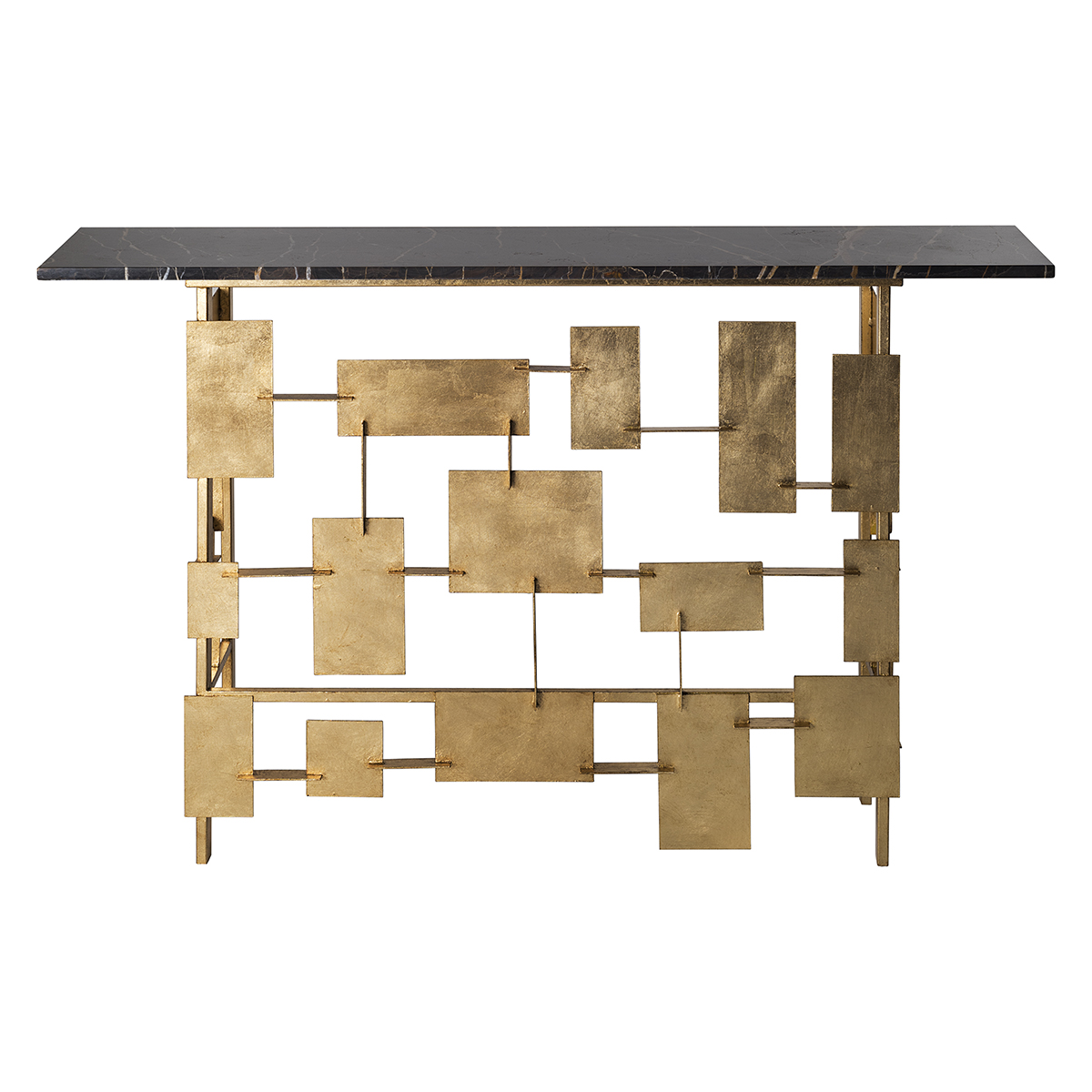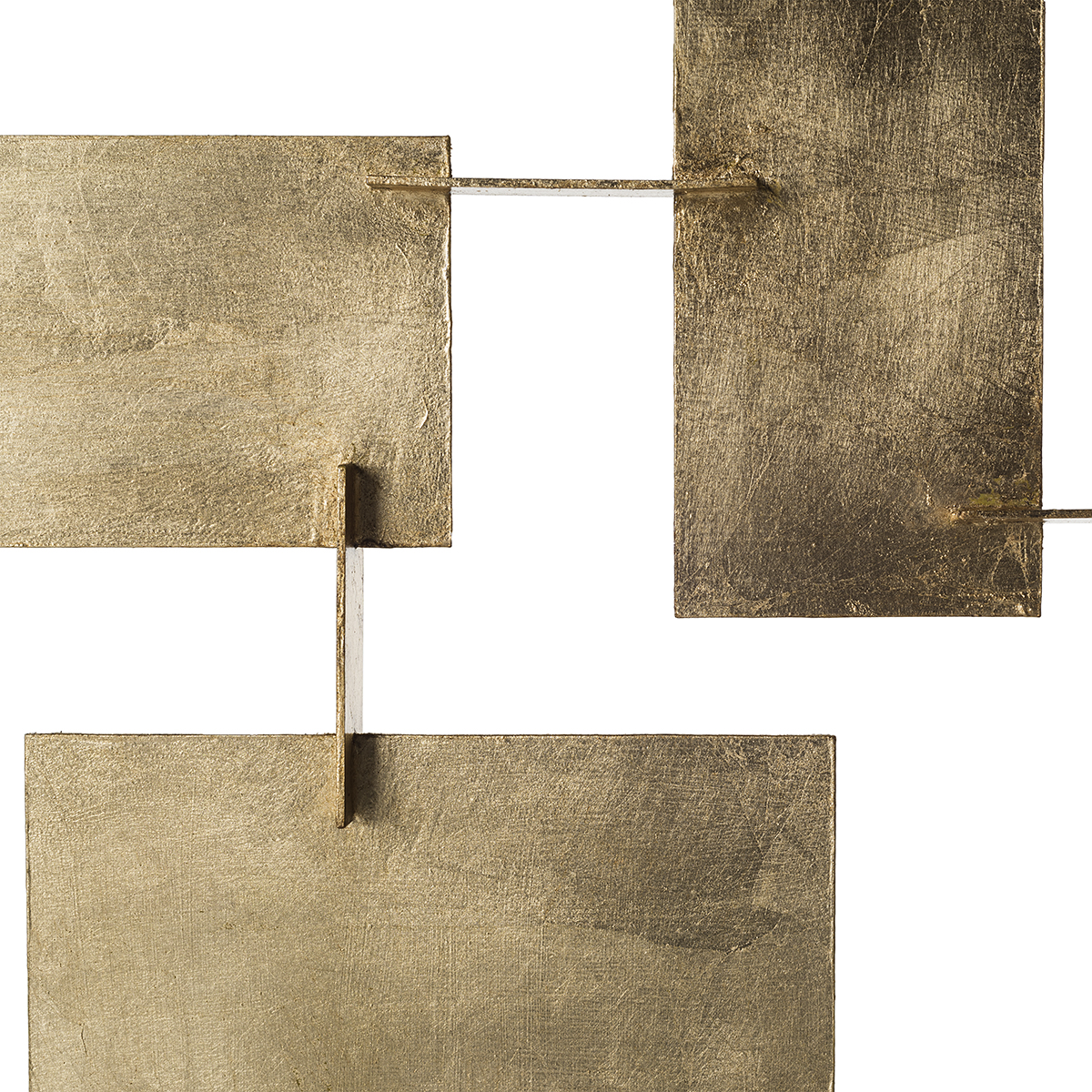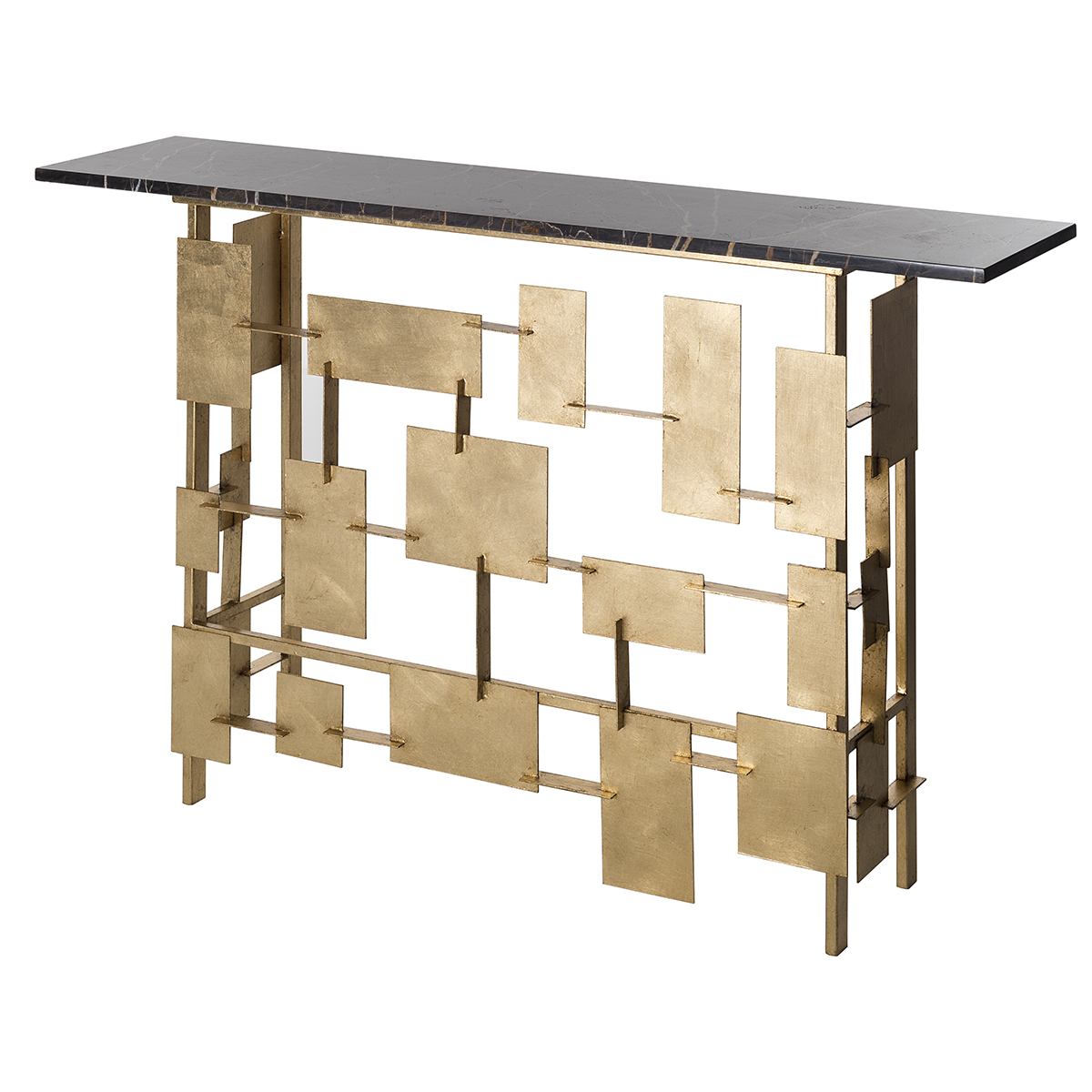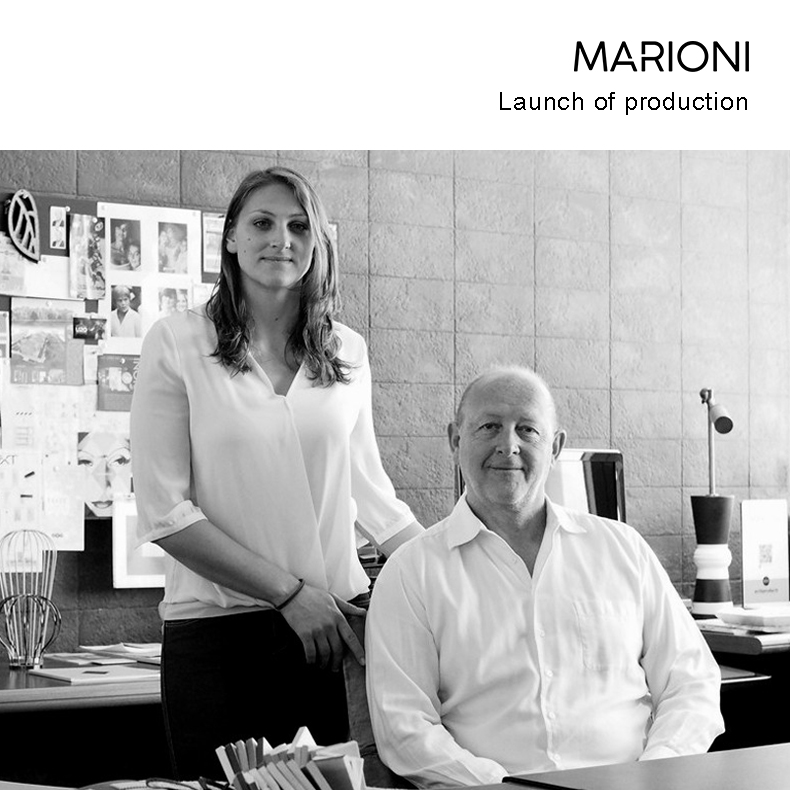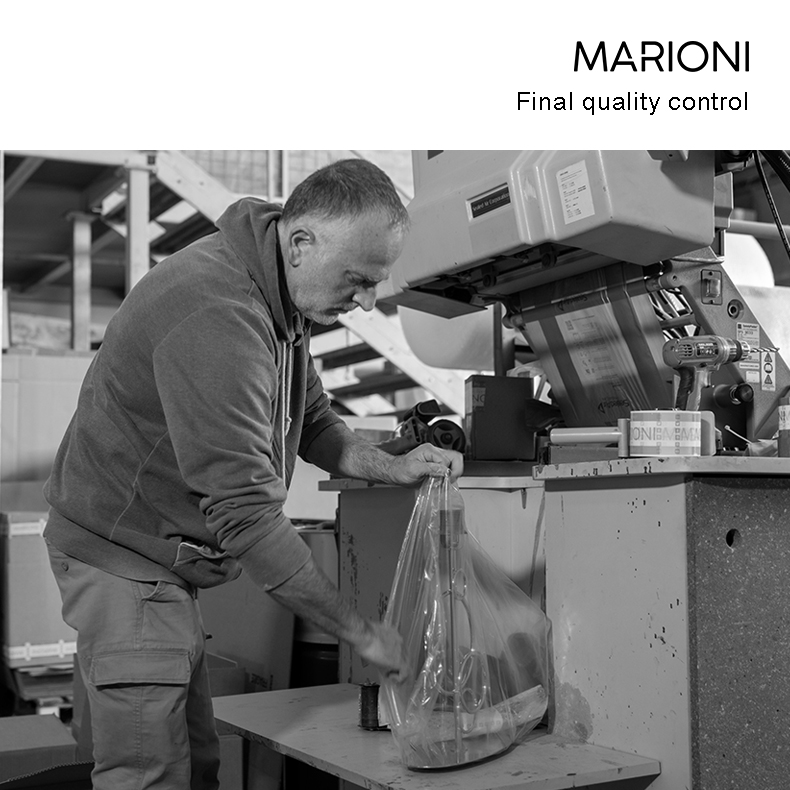Raymond - Console table
Furniture
Unique Raymond console table made with welded iron plates. Structure decorated with the application of metal leaf and provided with marble top which can be choosen from a wide selection of materials.
There are many proposals by Marioni for the console tables of the Notorious collection. Whether we have a metal structure, glass or marble tops, decorative elements in wood or ceramic, all of them perform the task for which they were designed: to give every room a touch of class and timeless elegance.
Product sheet 
| Product code | 02716C |
| Dimensions | h.80x130x40 cm |
| Weight | 60 Kg |

Notarization: Raymond - Console table
Blockchain: etherna-mainnet
Registration date: 5/3/2023 9:47:12 AM
Address explorer: 0x7DEFE18D23CeC4152B1d6f1C6790BB8240dcf090
Notarization hash SHA256 encrypted:
Notarization JSON data:
Verify notarization
On Explorer The production stages
The production stages
-
1/2 Launch of Production
From 7/29/2024 To 7/29/2024
MARIONI Via G.Giusti 199 - Calenzano (Calenzano) - Province of Firenze, Italy
For each product produced, a precise procedure is followed, which is outlined in the Quality Manual, as the company is certified to ISO 9001-2015. Specifications are defined at the order phase and the characteristics can be found on the Product Sheets, available on the website www.marioni.it.Every year, a third-party entity verifies compliance with internal procedures and monitors and evaluates the maintenance of company objectives.
After the launch into production, the system generates Mandates that are delivered to the Production Manager. In addition to the Mandates, Purchase Proposals are automatically created for the Supplier, which the Purchasing Department manages based on parameters such as: stock levels, minimum orders, minimum stock levels, etc. Depending on the collections and lines, there are different processing phases.
Checks during production
Each Department Manager coordinates and controls the work of the operators to ensure:
• the correct execution of Work and Control Instructions;
• the verification of the progress of the work to control that all items in the program have been produced and have passed all processing phases.
For us, quality and sustainability have always been company priorities.
All of our personnel are committed daily to complying with the highest quality and service standards. Lamps, furnishings, upholstered furniture and exclusive furniture, although entirely handmade with artisanal care, must still undergo the strictest stress tests and guarantee their performance over time.
Active and constant participation in Research and Development tenders, Internationalization and Digitalization at regional, national and European level confirms our commitment to continuous improvement of performance and collaboration with other partners in the Tuscan regional supply chain.
-
2/2 End of Process
From 10/7/2024 To 10/7/2024
MARIONI Via G.Giusti 199 - Calenzano (Calenzano) - Province of Firenze, Italy
Before wrapping and packaging, each product, whose compliance is guaranteed by the self-control system required by the ISO 9001-2015 standard, is always subjected to a series of final checks, the methods of which depend on the type of product.
Our staff is suitably trained and qualified for this purpose. The implementation and results of production control are periodically checked by the Quality Manager using the following tools:
- Internal Audits
- Management of Non-Conformities
Sample surveys and analysis of data relating to the management of Non-Conformities found on the process/finished product are periodically carried out. This analysis may lead to requests for Corrective or Preventive Actions.
But the relationship with the client does not end with the shipment of the product. The history of the company is so full of personal experiences and human values that make it unique in its kind. The relationship that arises between the customer and our creative team goes beyond a simple supply, often resulting in a positive and continuous exchange of stimulating ideas and innovative proposals: a vision that makes Marioni emerge in the variegated Italian entrepreneurial landscape.
The adoption of socially responsible behaviour, monitoring and responding to everyone's economic and environmental expectations also achieves the goal of acquiring a competitive advantage. In fact, a product is not appreciated solely for its external or functional qualitative characteristics; its value is largely estimated for non-material characteristics, such as customization services, the image and finally the history of the product itself.
SUSTAINABILITY
Marioni is a family-run company, now in its third generation, and pursues a cultural and ecological mission alongside its commercial interests. Preserving our environment is expressed in every action performed and it is manifested in how our products are developed and manufactured. Marioni makes use of many different materials and the ongoing development of this material portfolio is a central focus of its sustainability efforts. In order to reduce the impact on the environment, Marioni is working intensively to replace all primary materials with recycled ones when it is possible.
With Legislative Decree 116/2020 which transposes the EU directives on waste, starting from 01/01/2023 all packaging are subject to the obligation of environmental labeling. Based on what is indicated in the Decision 97/129/EC regulation, the minimum information to be reported on the packaging are:
• Type of packaging: box, etc
• Material identification: alphanumeric identification coding.
• Reference material family: paper, plastic, etc. and the indication of the type of collection.
More information here
https://www.marioni.it/pdf/Sostenibilita%20-%20Sustainability.pdf
PREVIOUS PHASES
03_METAL PROCESSING
In our company, we mainly use brass to create our collections, but we can also work with steel and copper depending on the customer's requests. Starting from the technical drawings, the first phase in preparing the structures is cutting the components, to which assembly is then added. Welding is the process that allows the physical/chemical union of two joints by melting them together, or by using filler metal. Welding creates a permanent connection that differs from other joining systems (such as riveting or screwing), which do not create material continuity.
The next step is polishing, a professional treatment of metal surfaces to make them suitable for processes such as painting or chroming/nickel-plating. The processing is carried out using specific machines or equipment, resorting, when necessary, to auxiliary substances, such as abrasive pastes or liquid detergents. The machines, generally called "polishing machines," and the equipment (disks, brushes, etc.) or materials (sand, rubble, etc.) vary depending on the specific polishing process that needs to be performed, as well as the type of surface or use of the product.
To obtain the correct aesthetic finish of a metal, electrochemical deposition is used in specific galvanic baths. This is a process that allows a metal to be coated with a thin layer of another metal using electrolytic deposition. The thickness of the covering layer can vary from 1 to about 10 µm.
This treatment is usually used to protect metal structures from corrosion but also has a decorative purpose. All our products, after the galvanic treatment, are then painted with transparent lacquer and passed through an oven at 100°C for stabilization of the protection. This ensures the durability of the finishes over time, even in humid and salty environments.
04_MARBLE AND GLASS TOP PROCESSING
Marble Processing
Marble is a precious material that forms through a metamorphic process from sedimentary rocks, such as limestone or dolomite, which causes a complete recrystallization of the predominantly composed calcium carbonate. The combined action of temperature and pressure during the transformation of sedimentary rock into marble leads to the progressive obliteration of the original structures and textures present in the rock.
The color of the marble depends on the presence of mineral impurities (clay, sand, iron oxides, etc.) existing in granules or layers within the original sedimentary rock. During the metamorphic process, these impurities are moved and recrystallized due to pressure and heat.
After cutting, the slabs are polished to obtain the maximum aesthetic appeal. We mainly use Calacatta Oro, Noir Saint Laurent, Sahara Noir, or Dolomite, but upon request, we can provide many other types of material.
Glass Top Processing
90% of the flat glass produced in the world, called float glass, is manufactured using the "floating" system, where molten glass is poured onto one end of a bath of molten tin. The glass floats on the tin and spreads along the surface of the bath, forming a smooth surface on both sides. The glass cools and solidifies as it flows along the bath, forming a continuous ribbon. The product is then "fire polished" by reheating it on both sides, resulting in two perfectly parallel surfaces. For our table tops, we use standard thicknesses of 10, 12, and even 15 mm slabs.

Notarization: Launch of Production
Blockchain: etherna-mainnet
Registration date: 10/7/2024 11:42:41 AM
Address explorer: 0x2558c980dC87a7ff4FaDDcAd8D064B89dEcAB8ff
Notarization hash SHA256 encrypted:
Notarization JSON data:
Verify notarization
On Explorer
Notarization: End of Process
Blockchain: etherna-mainnet
Registration date: 10/7/2024 11:44:11 AM
Address explorer: 0x2558c980dC87a7ff4FaDDcAd8D064B89dEcAB8ff
Notarization hash SHA256 encrypted:
Notarization JSON data:
Verify notarization
On Explorer

